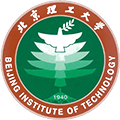Computer Science and Technology
| Bachelor-Program | |
|---|---|
| Duration | 4 years |
| Starting Date | September |
| Tuition Fee / Year | ¥30000 (RMB) |
| Teaching Language | English |
Program Infomation
The Computer Science and Technology program of BIT include two directions:Computer Science and Technology (Chinese and English Taught) and The Internet of Things Engineering. Both directions have been admitted to the ExcellentEngineers Education Programs of the Ministry of Education.This program has characteristics of strong theoretical and practical properties, high speed development and wide application.
To cultivate talents with solid background knowledge and broad viewpoints, the program emphasizes theoretical and professional foundations through courses of mathematics, logic, data structure, algorithms and intelligent technology.
The program offers a variety of flexible courses in fields of software theory and engineering, high-performance embedded computing, network and information security, language information processing and knowledge engineering, intelligent perception and media computing, and virtual reality and simulation calculation.The Internet of Things Engineering direction is a multi-disciplinary program.It provides students with courses in computer science and technology, automation control, and electronic communication.By experiments in practice, students can master basic theories and application techniques in objective perception, network and equipment interconnection, and information management and application.
Graduates from this direction are now working in famous IT companies such as IMB, Microsoft, Google, Oracle and Baidu, as well as well-known enterprises of finance, insurance, communication and the internet of things. Some graduates also found research, maintenance, management and education jobs in universities, scientific research institutions and government departments.
The core courses for this program include Mathematical Analysis For Engineers, Linear Algebra, Probability and Statistics, Physics, Discrete Mathematics, Data Structures and AlgorithmsDesign, Object-Oriented Programming, Fundamentals of Analog Electronics, Computation Theory and Algorithms, Numerical Analysis, Database Principles and Design, Operating Systems, Compiler Principles and Design, Computer Networks, and The Interface Technique ofthe Microcomputer.

